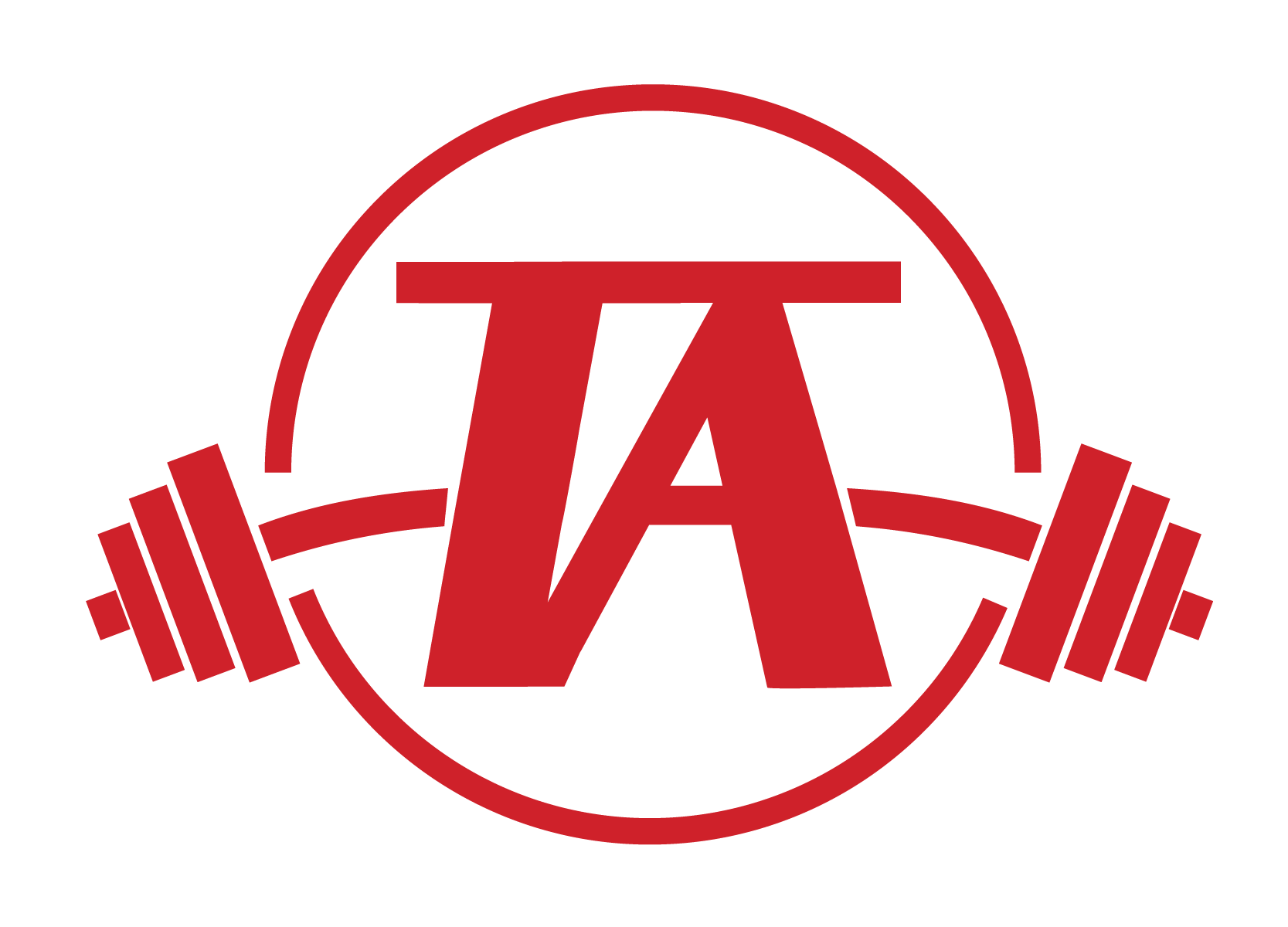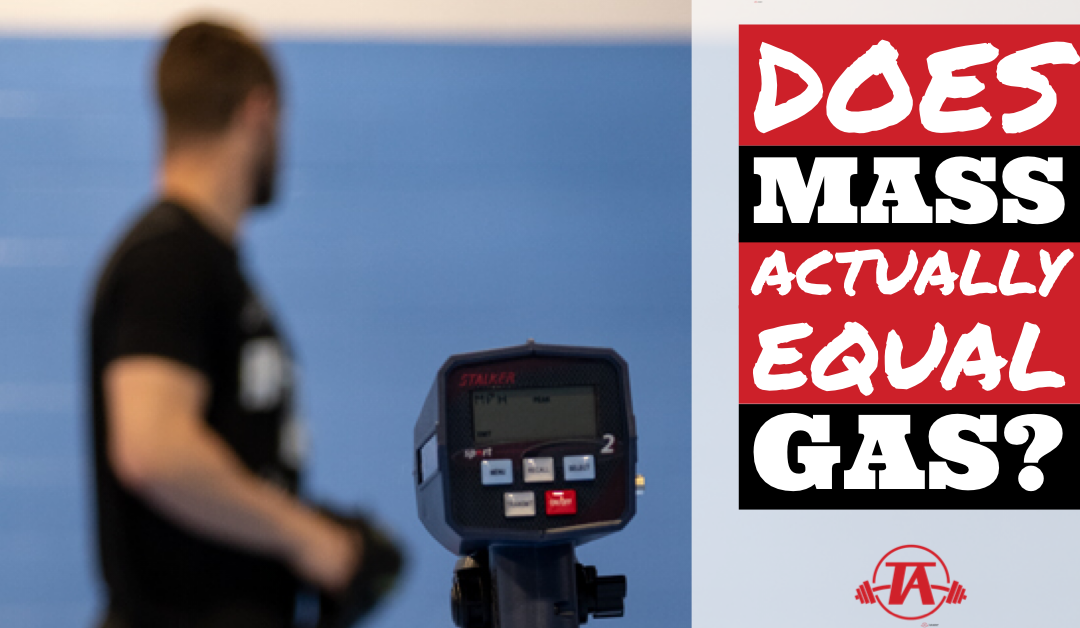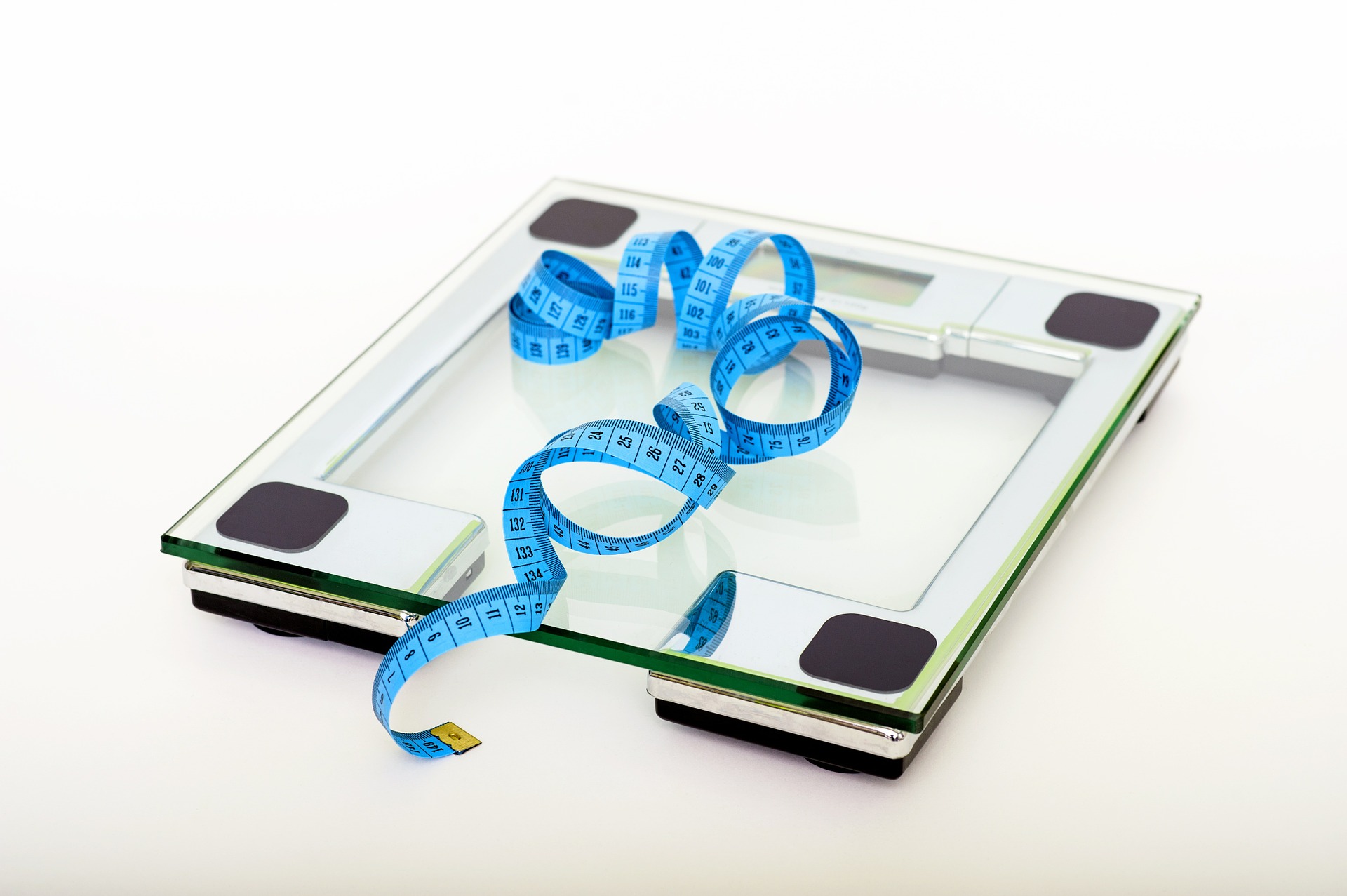“Mass equals gas” is the rallying cry of many strength coaches who work with pitchers. They believe that if a pitcher gains weight, he will throw harder. Many athletes follow this prescription without a second thought, but does it actually hold water? Let’s dig into it and find out.
The Physics of Pitching
The strength coaches and athletes who follow this logic actually have a reasonable argument to back up their position. The equation for momentum is, mass (kg) x velocity (m/s). Therefore, hypothetically, a heavier pitcher would be able to create greater momentum of his body/arm, which can then be applied to the baseball.
Momentum = Mass x Velocity
These equations seem to suggest that if an athlete were to gain weight, and still move at the same speed, he would have more momentum and move the ball faster. But does that always happen?
In a study of 54 collegiate pitchers, ball velocity was shown to have a significant correlation with bodyweight (Werner et al., 2008). Momentum can also increase when movement velocity increases and weight remains the same. For example, higher average pelvis rotation velocity during arm cocking and average upper torso rotation velocity during arm acceleration have been shown to correlate with higher throwing velocity (Stodden et al., 2001). However, to increase one variable without affecting the other is unlikely, therefore momentum can also increase if the gains of one variable, mass or velocity, outpaces the loss of the other variable.
Another important equation for the physics of pitching is;
Force (f) = Mass (m) x Acceleration (a)
The ability to throw a baseball exceptionally fast requires the ability to produce a lot of force very quickly. This requires a high level of maximal force production, due to the reduced ability to produce force at higher movement velocities. All of this is to say that, the greater maximum force (f) we can produce, the faster we can potentially accelerate (a) the baseball (m).
A study of collegiate pitchers found that peak ground reaction forces (GRF) at the front leg were over 200% of body weight (Guido et al., 2012). So, the amount of force the front leg has to absorb and transfer into the trunk is directly affected by bodyweight. On the positive side of this, higher GRF at the front leg are associated with higher ball velocities (McNally et al., 2015), so more weight is clearly a positive…to a point.
When Is More Mass No Longer Better?
Clearly there is a point of diminishing returns for increasing body weight or the best pitchers would look like sumo wrestlers. But, what is that point?
Well, it’s different for each athlete, but it generally depends on factors such as height, limb length, relative strength, and athlete type (think strong or springy).
As I mentioned earlier, higher bodyweight tends to mean higher GRF at the front leg, which tends to mean higher baseball velocity. But, in order to be able to accept and transfer all of that force from the lower body into the upper body, you have to also possess high relative strength (how strong you are compared to your size). So, if your weight gain outpaces your relative strength by too much, you’ll still produce high GRF, but it may be wasted due to your inability to effectively transfer that force.
The ability to move fast goes hand in hand with relative strength, and we know from the momentum equation and the study of pitching kinematics, that movement speed correlates with throwing velocity. For example, as we discussed earlier torso and pelvis rotation velocity have been shown to correlate with ball velocity (Stodden et al., 2001).
Being heavier can make moving fast difficult if weight gain is too extreme or done incorrectly.
Increased body fat leads to more resistance to movement, which means that in order to move the same way or speed that you did before, you’ll have to produce more force to do so (Miller, 2017).
High velocity also requires extreme ranges of motion (ROM) and body positions. For example, greater external rotation and horizontal abduction are associated with higher velocity (Fortenbaugh et al., 2009). In addition to this, movement sequencing is extremely important because if any movements happen too closely together or too far apart energy is not efficiently transferred (Fortenbaugh et al., 2009).
Coordination, movement capacity, and joint range of motion (ROM) can be negatively impacted by increased body fat (Miller, 2017), which would likely negatively impact velocity.
What Does This Mean For You?
Gaining weight can be very helpful for physically immature athletes who need to gain strength and who are on the lower end of the weight range for their height.
The average major league pitcher is 6’2” (Colin, 2019) and 216 lbs (Hall, 2016). Based on these values, a height and weight recommendation for an aspiring pitcher would be plus or minus about 5-10 lbs per inch of height. Note: these ranges are anecdotal and merely guidelines.
This would mean:
6’1” 200-210
6’3” 220-230
You get the idea from there.
If you’re 6’2” and 165 lbs., you will probably benefit from gaining weight, specifically lean mass. At this height your frame can likely handle quite a bit more weight, and with more weight you’re likely to see your force capabilities, momentum potential, and velocity increase.
However, if you’re 6’2” and you’re 220 lbs., it’s unlikely that getting to 230 lbs. is going to have a large, positive impact on your velocity. Your improvements are more likely to come from improvements in mobility, power, movement sequencing, or other sport specific initiatives. At this point you’re already at the higher end of the weight range for your height, so you’ve come close to maxing out the gains you’ll get from this quality.
The other consideration here is that the smaller you are, the slower you’ll probably want to gain weight. The smaller you are, the more likely you are to be negatively affected by fast and extreme weight gain due to the high relative percentage it will be.
In this same vein, the type of athlete you are should also help guide your weight gain. Some athletes are more static, that is they rely on strength, and some athletes are more springy, that is they rely more on movement speed and reactivity. The static athletes will tend to perform better at a relatively heavier bodyweight and the springy athletes will tend to perform better at relatively lower bodyweight.
Strong athletes tend to do well at the higher end of the weight range for their height, while the springy athletes will tend to do well at the lower end.
In order to minimize fat gain, Dr. Mike Isratel suggests shooting for weight gain of 0.25-0.5% of body weight per week (Israetel, 2019). For a 150 lb athlete that is 1/3 to 3/4 of a pound per week. This may seem slow, but remember, too much fat gain may have a counterproductive effect. Also, over the course of a year this could be almost 40 lbs!
Conclusion
This article is not meant to discredit the value of weight gain for all athletes, it is merely meant to bring awareness to the fact that getting huge doesn’t automatically mean you will throw 100mph.
Gaining weight can be very helpful for athletes who aren’t already very strong, are on the lighter end of what their frame can handle, and if the weight gain is mainly lean mass. However, gaining weight is not a direct line to increasing throwing velocity and it’s important to tailor recommendations to the specific athlete.
Additional factors such as relative strength, the ability to move fast, the ability to move through extreme ROM, and with precise sequencing are also important factors to consider when deciding on a target body weight.
For a brief recap, check out this video:
Interested in individualized training? Contact me here.
Resources
McNally, Michael P.; Borstad, John D.; Oñate, James A.; Chaudhari, Ajit M.W. (2015) Stride Leg Ground Reaction Forces Predict Throwing Velocity in Adult Recreational Baseball Pitchers. The Journal of Strength and Conditioning Research.
Guido J, Werner S (2012) Lower-Extremity Ground Reaction Forces in Collegiate Baseball Pitchers. The Journal of Strength and Conditioning Research.
Werner SL1, Suri M, Guido JA Jr, Meister K, Jones DG. (2008). Relationships between ball velocity and throwing mechanics in collegiate baseball pitchers. Journal of Shoulder and Elbow Surgery.
Stodden, David & Fleisig, Glenn & Mclean, Scott & Lyman, Stephen & Andrews, J.R.. (2001). Relation of pelvis and upper torso kinematics to pitched baseball velocity. Journal of Applied Biomechanics. 17. 164-172.
Miller, TA (2017) NSCA’s Guide to Tests and Assessments. Retrieved from https://www.nsca.com/education/articles/kinetic-select/sport-performance-and-body-composition/
Fortenbaugh D, Fleisig GS, Andrews JR (2009). Baseball Pitching Biomechanics in Relation to Injury Risk and Performance. Sports Health.
Hall, C (2016, Dec 27). MLB Players Packing on Muscle: Analysis of 144 years of reported weight of players. Retrieved from https://medium.com/@CQH/mlb-players-packing-on-muscle-analysis-of-144-years-of-reported-weight-of-players-b8f56afcda9b
Colin (2019). Average Heights for MLB Pitchers. Retrieved from https://infogram.com/average-heights-for-mlb-pitchers-1g43mnr9ovn3pzy
Israetel, M [@rpdrmike](2019, April 23). Weight Gain Periodization Guidelines. Retrieved from https://www.instagram.com/p/BwnU2_FnZ1d/


